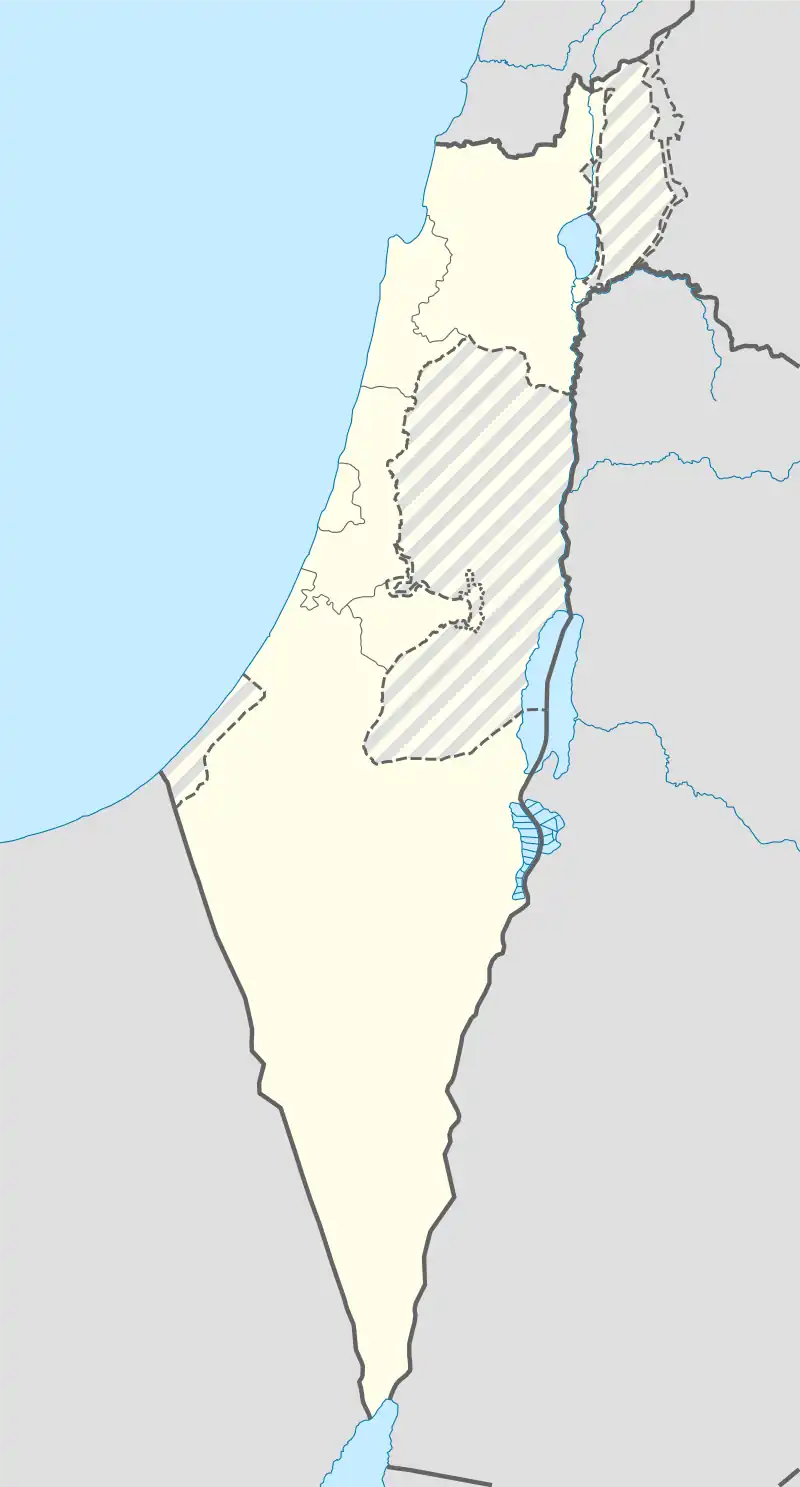Mazkeret Batya
| |
|---|---|
| Hebrew transcription(s) | |
| • ISO 259 | Mazkert Batya |
 | |
 Mazkeret Batya  Mazkeret Batya | |
| Coordinates: 31°50′59″N 34°50′35″E / 31.84972°N 34.84306°E | |
| District | Central |
| Founded | 1883 |
| Government | |
| • Head of Municipality | Gaby Gaon |
| Area | |
| • Total | 7,440 dunams (7.44 km2 or 2.87 sq mi) |
| Population (2021)[1] | |
| • Total | 15,424 |
| • Density | 2,100/km2 (5,400/sq mi) |
.jpg.webp)
Mazkeret Batya (Hebrew: מַזְכֶּרֶת בַּתְיָה) (lit. "Batya Memorial") is a local council in central Israel located southeast of Rehovot and 25 kilometres (16 mi) from Tel Aviv. Mazkeret Batya spans an area of 7,440 dunams (7 km²). In 2021 it had a population of 15,424.[1] The mayor of Mazkeret Batya is Gaby Gaon.[2]
History
Mazkeret Batya, initially Ekron, was established on November 7, 1883 by 11 ultra-Orthodox Jewish farmers from Russia, one of them Yaakov Laskovsky. It was the first agricultural settlement of the Hovevei Zion movement.
The land was purchased by Baron Rothschild to promote Jewish agriculture in Palestine. Rabbi Shmuel Mohilever was instrumental in mobilizing funding and organizing the settlers. Mohilever's remains were later reinterred in the Mazkeret Batya cemetery. In 1887 the name was changed to Mazkeret Batya, in memory of Betty Solomon de Rothschild, mother of Baron Edmond James de Rothschild. The history of the founding is described in the book "Rebels in the Holy Land", by the historian Sam Finkle where he writes about the community's struggle to uphold the laws of the sabbatical year despite fierce opposition.
The economy of the village was originally based on dry farming, which continued even after the Mekorot Company constructed a pipeline to bring water from Rehovot.[3] In 1947, Mazkeret Batya was home to 475 people.[3]
According to a census conducted in 1922 by the British Mandate authorities, Mazkeret Batya (then Ekron) had a population 368 Jews.[4] During the Mandate era, a Jewish police station was established in Mazkeret Batya to safeguard the local roads. In the War of Independence, convoys to besieged Jerusalem left from Mazkeret Batya. A field hospital operated there to care for Haganah fighters wounded at Latrun.[5]
According to one source, at the end of the British Mandate for Palestine, the British tried to hand the nearby Aqir airfield and camp to the Palestinian Arabs, apparently without success.[3]
Due to its proximity to Tel Aviv, Mazkeret Batya has experienced a growth spurt, becoming a mixed community of religious and secular Jews. Historic landmarks include Beit Ha'Itut (Signal House), the Great Synagogue, Beit Meshek HaBaron ("The Baron's Farmhouse", now housing a cultural center), the saqiya-type water-rising system with its wooden wheels, well and pool, and an old farmyard.[5]
Twin towns — sister cities
Mazkeret Batya is twinned with:
References
- 1 2 "Regional Statistics". Israel Central Bureau of Statistics. Retrieved 22 February 2023.
- ↑ "Mazkeret Batya website". Archived from the original on 2009-10-25. Retrieved 2009-11-16.
- 1 2 3 Jewish National Fund (1949). Jewish Villages in Israel. Jerusalem: Hamadpis Liphshitz Press. p. 41.
- ↑ "Palestine Census ( 1922)".
- 1 2 Society for Preservation of Israel Heritage Sites Archived 2009-12-05 at the Wayback Machine
- ↑ "Stadt Celle". www.celle.de. Retrieved 2010-01-05.
- ↑ Harry Sanders, "'Shalom,' from Israel," Calgary Sunday Sun 25 Jan. 1998: S7
- ↑ "Ville de Meudon - Villes jumelles". Ville de Meudon. Archived from the original on 2013-05-07. Retrieved 2013-07-29.
External links
- The "Gesher" community of Mazkeret Batya
- Kehila Datit of Mazkeret Batya Archived 2011-07-14 at the Wayback Machine
